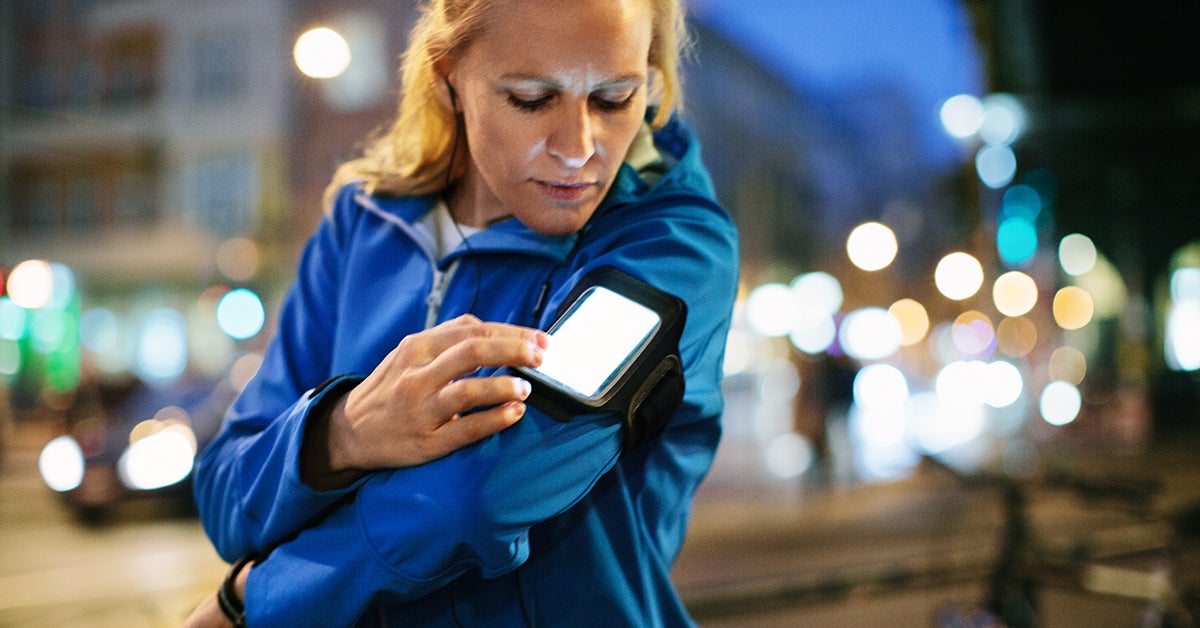
[ad_1]
Researchers say the app with a two-wire attachment can diagnose a serious heart attack as well as an ECG can.

An ST-Elevation Myocardial Infarction (STEMI) heart attack is fatal if a person doesn’t receive quick access to treatment.
A new smartphone app could help in such instances.
A recent study concludes that a smartphone app used to detect heart rhythm trouble can also tell if someone is having a STEMI heart attack nearly as accurately as a standard hospital electrocardiogram (ECG).
“This app can speed a patient’s decision to seek care, enabling doctors to act immediately. Reducing the delay to treatment by even an average of an hour could cut the mortality rate in half,” Dr. J. Brent Muhlestein, lead investigator of the study and a cardiovascular researcher at the Intermountain Medical Center Heart Institute, told Healthline.
Researchers presented their findings this weekend at the American Heart Association’s 2018 Scientific Session in Chicago.
In this study, 204 patients with chest pain received both a standard 12-lead ECG and an ECG through a smartphone with the AliveCor app using a special two-wire attachment.
According to Muhlestein, heart attacks happen in different parts of the heart. A typical ECG has 12 wires and each one looks at a different area.
To approximate the same level of accuracy with the AliveCor app, the two wires are moved around the body to examine all 12 parts.
Researchers found the ECG app with the two-wire attachment could accurately diagnose a STEMI heart attack compared to the traditional ECG.
“The app can record an ECG wherever you are and send it into the cloud where it can be reviewed immediately by a cardiologist,” said Muhlestein.
Some heart attacks result from an artery being blocked by 80 to 90 percent.
Muhlestein says a STEMI heart attack happens when one of the heart’s major arteries is completely blocked.
“There is no blood flow going to the part of the heart fed by that artery. Without oxygen, the blocked part of the heart will begin to die,” he said.
The symptoms of a STEMI heart attack can include chest pain, shortness of breath, dizziness, and nausea.
According to the Centers for Disease Control and Prevention (CDC), almost half of heart attack deaths happen outside of a hospital.
This means that many people having a heart attack don’t recognize the early warning signs.
“If somebody gets chest pain and they haven’t ever had chest pain before, they might think it’s just a bug or it’s gas, and they won’t go to the emergency room,” said Muhlestein in a press release.
Every minute lost before treatment means the death of more heart cells.
“Once heart tissue is dead, it doesn’t grow back,” warned Muhlestein.
There is a direct relationship between the amount of time an artery is blocked and the odds of survival.
Cardiologists say “time is muscle” to express the importance of getting treatment as soon as possible.
Muhlestein said with this app, “If you suspect someone is having a heart attack it could simply be a matter of taking out your smartphone and following the on-screen instructions to find out.”
For a STEMI heart attack, a catheter (flexible tube) with a balloon on the tip is inserted into the patient’s blocked artery and inflated to restore blood flow by flattening plaque against the wall of the artery.
According to the American Heart Association (AHA), one of the quality measures for STEMI care is the “door-to-balloon” time or the time it takes to successfully re-open a blocked artery.
The AHA recommends this action occur in less than 90 minutes.
The clock starts when the patient arrives and stops when the balloon is inflated in the hospital’s cardiac catheterization lab.
It isn’t just smartphones.
The new AppleWatch Series 4 smartwatch also has an ECG built into it.
It can tell if your heart isbeating normally or if there are signs of atrial fibrillation (AFib), aquivering or irregular heartbeat that can lead to major health complicationslike blood clots, stroke, or heart failure.
Unlike conventional medical equipment, smart device–based apps are low cost and easily accessible even in developing nations where access to medical equipment can be limited.
“We’re going have to be careful that we use this technology appropriately. I can imagine if it’s used inappropriately that it will create a whole bunch of paranoid patients who flood our emergency rooms, but I think we can address that.” said Muhlestein.
“The opportunity to collect data on patients not just when they come to a clinic or emergency room, but even on a day-by-day basis, can result in much better outcomes,” he added.
A recent study found out that a smartphone app that’s currently used to diagnose heart rhythm problems can also be used to find out if someone is having a heart attack.
This technology can speed treatment while reducing costs and improving access to medical care even in developing nations.
Smart devices are becoming an increasingly important way to speed diagnosis of serious medical conditions.
Source link